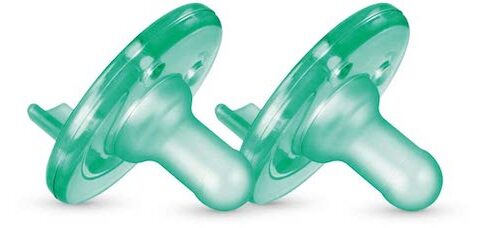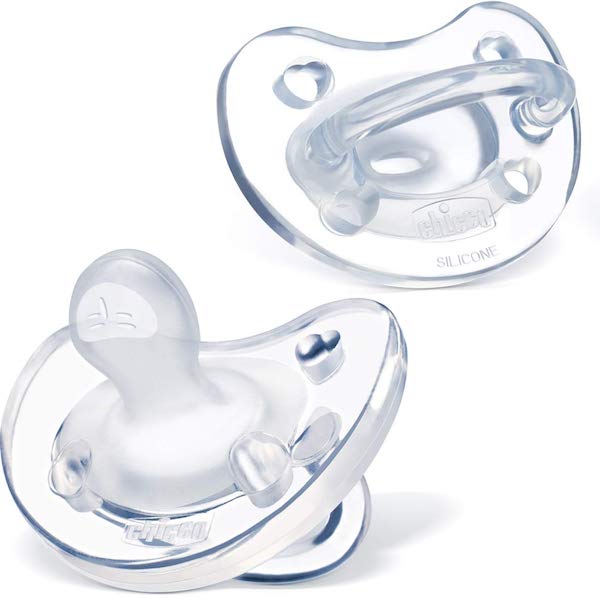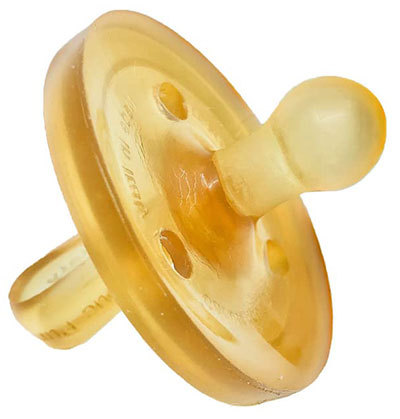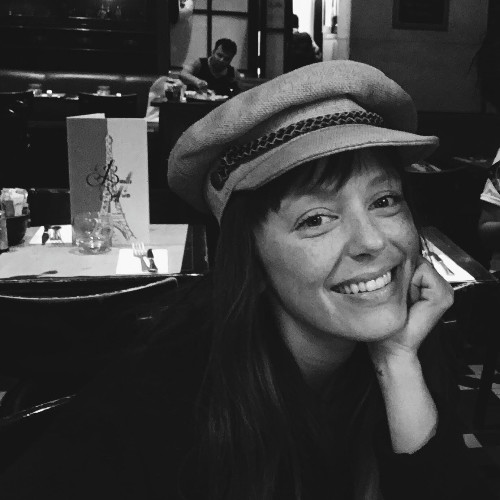Should I Introduce a Pacifier to My Newborn?
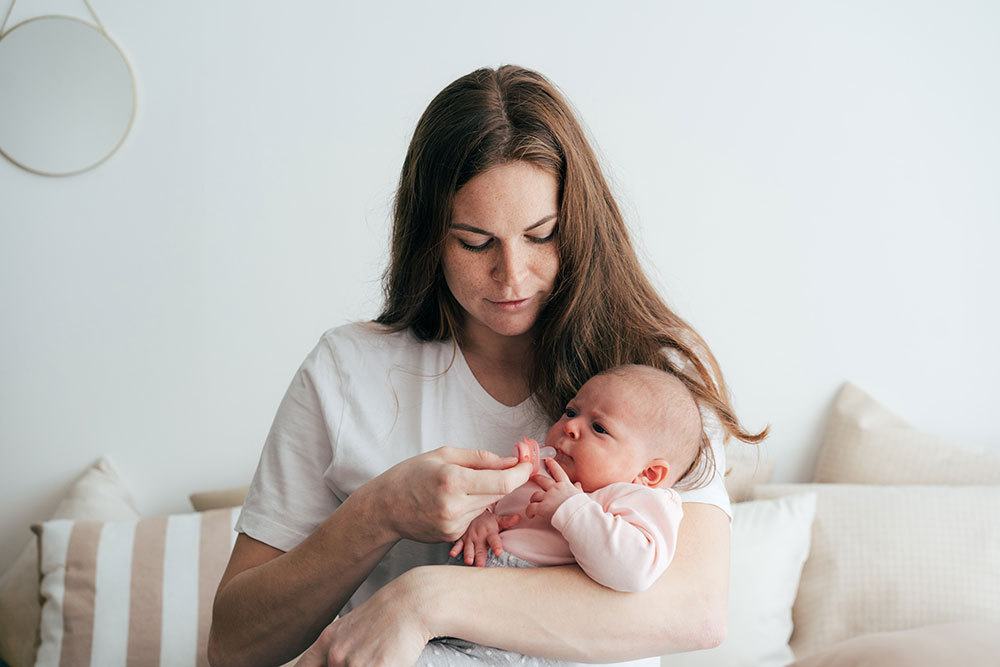
Between oral development, nipple confusion, and infant safety, there are many questions regarding newbies and binkies.
Experts: Aubri Lutz, RN, IBCLC; Edward Moody, DDS
Among the many choices a new parent must make, whether or not to give your newborn a pacifier is one of the great debates. Introducing a pacifier (and which one and when) should be carefully considered and aligned with parents’ goals for feeding, soothing, and development. If you’ve found yourself on the fence about the binky, our experts share advice and insight to help you make the right choice for your family.
When to Introduce a Pacifier to a Newborn?
A pacifier can be offered from day one, and hospitals will usually give new parents a few pacis following birth to help calm a baby between feedings and to assist with sleep. The American Academy of Pediatrics (AAP) also recommends offering your baby a pacifier for naptime or bedtime, as it may help reduce the risk of sudden infant death syndrome (SIDS).
Another pacifier pro—that isn’t typically top-of-mind for new parents—is that they are disposable, meaning you can toss it immediately if you determine it’s not a good fit for your baby. This is especially helpful as your baby grows into a toddler and the time comes for them to wean. “[We] recommend new babies suck on pacifiers instead of thumb sucking or fingers for comfort because a pacifier habit tends to be easier to stop down the road and at an earlier age,” says Edward Moody, DDS, a pediatric dentist practicing in Morristown, Tennessee, and a member of the American Academy of Pediatric Dentistry (AAPD).
Is a Pacifier Recommended for a Breastfed Baby?
If you are planning to nurse, “I do not recommend pacifier use for newborns,” says Aubri Lutz, RN, IBCLC, a lactation consultant in Corpus Christi, Texas. “This is because you want to establish successful breastfeeding prior to introducing artificial nipples to the baby.”
This recommendation is backed up by the American Academy of Pediatrics (AAP) official guidance on pacifier use in breastfeeding babies. The organization suggests waiting until “breastfeeding is going well” before introducing a pacifier—which they say typically takes three to four weeks. According to Lutz, well-established breastfeeding would entail “no pain or issues with latch, diaper output is appropriate for baby’s age, weight gain has started to increase steadily, and baby is overall meeting developmental milestones.”
Another reason it’s recommended to wait to offer a paci until after you and your baby have mastered breastfeeding is due to nipple preference (sometimes called “nipple confusion”). Lutz explains that research has shown introducing artificial nipples can lead to nipple preference and can even result in early weaning from breastfeeding if nursing hasn’t been well established beforehand. The reason for a baby developing a preference is that the technique needed to express milk from a breast is different than sucking on a pacifier (and feeding from a breast is more difficult).
The remedy? Patience, perseverance, and practice—like all things in parenting.
“To prevent nipple [preference], keep all suckling at the breast for the early weeks and avoid using pacifiers during growth spurts. If your baby is showing hunger cues, it is best to put them directly to the breast for a breastfeeding session. With too much pacifier use, parents decrease the suckling time at the breast; this decreased time at the breast can translate to lower milk supply,” says Lutz.
Do Pacifiers Affect Oral Development?
Even if you wait to offer a pacifier after feeding routines are solidified, it’s still important to consider your child’s oral development. “When a baby repeatedly sucks on a pacifier or finger over a long period, the upper front teeth may begin to tip outward or not come in properly,” explains Dr. Moody. “Crooked teeth or bite problems can also occur with prolonged sucking and may result in the child needing significant orthodontic treatment later to correct the problem.”
To ensure your baby is on track for proper development, the AAPD advises paying a visit to baby’s pediatric dentist by age 1 or whenever the first tooth appears. After an evaluation, your child’s dentist will let you know if they have any concerns about your little one’s pacifier use. However, a good dentist will go into the conversation, acknowledging (and reassuring you) that pacifier use is common and developmentally appropriate for babies and young toddlers.
“Remember that the sucking instinct is normal for infants and young children, and understand that most children will naturally stop on their own,” says Dr. Moody. “If a child does not stop by themself, the habit should be discouraged after 3 years of age.”
What Pacifiers Are Best for Infants?
When choosing a pacifier for your little one, make safety and shape the priorities.
“Any pacifier that is used should fall under the consumer product safety guidelines [for pacifiers],” says Lutz. Additionally, she notes, “One-piece pacifiers are the safest and prevent the risk of choking and suffocation. Ideally, choose a shape that allows the baby’s tongue to curl around the nipple, and avoid anything flat or horizontal as this reinforces chewing and not suckling. Overall, anything cylindrical or sloped like a mountain is a great option for a breastfed baby.”
Our Picks for Best Pacifiers for Newborns
Best for Breastfeeding Newborns
What makes the Philips AVENT Soothie a prime pick for nursing parents is the wide base that more closely resembles a breast. The straight-nipple design helps babies keep their tongues in a natural position for sucking versus chewing. While lactation experts advise against giving a newborn a pacifier in the early days, the Soothie can be used from birth through 3 months of age. What’s more, the one-piece silicone Soothie is dishwasher safe.
Best for Oral Development
The slight curve of the PhysioForma Silicone Pacifier by Chicco helps your little one evenly distribute tongue pressure against the roof of their mouth for healthier oral development. Available in three sizes for babies ages 0-24 months, the PhysioForma is always made with 100 percent silicone and free of latex and BPA.
Best for Natural Rubber
The one-piece Simply Rubber Pacifier by Zoë b Organic offers a slightly shorter bulb than most other pacifiers to help avoid gagging. The round shield is designed to lightly touch baby’s nose for soothing and to better mimic breastfeeding (don’t worry, there are three vent holes for breathability). These pacifiers are made from soft, 100% natural BPA, phthalate, and nitrosamine-free rubber.


